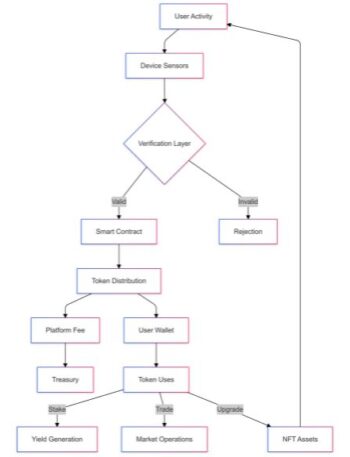What is Disinvestment?
Disinvestment is the process of selling or liquidating assets or subsidiaries and reducing capital expenditures. It involves several forms, including divestiture, which is the sale of a subsidiary or business unit; reduction of funding, where a company decreases its financial support for a particular project or entity; and phasing out involvement, where the company gradually reduces its participation over time.
- Understanding the Error Term: What It Means for Your Regression Models in Finance and Investment
- Unlocking the Expectations Theory: How Long-Term Interest Rates Predict Future Short-Term Rates
- How a Flat Tax System Works: Simplifying Income Taxation for Individuals and Businesses
- How Federal Poverty Level (FPL) Affects Eligibility for Government Benefits and Financial Assistance
- Maximize Generational Wealth: The Ultimate Guide to Dynasty Trusts and Tax Minimization
For example, Weyerhaeuser Co., a timber, land, and forest products company, has undertaken significant disinvestment strategies. By selling off non-core assets and focusing on its core timberland business, Weyerhaeuser has been able to streamline its operations and improve financial performance.
Bạn đang xem: Understanding Disinvestment: How Selling Assets and Subsidiaries Can Impact Your Portfolio and Business Strategy
Reasons for Disinvestment
Companies undertake disinvestment for various reasons, each driven by different motivations.
Financial Reasons
Financial instability or declining profitability in certain sectors can prompt companies to disinvest. For instance, if a particular asset or subsidiary is no longer generating sufficient returns, it may be wise to sell it off and reallocate resources to more profitable areas. Market instability can also trigger disinvestment as companies seek to mitigate risks and secure their financial positions.
Ethical and Environmental Reasons
Increasingly, ethical and environmental considerations are driving disinvestment decisions. Investors and companies are aligning their investments with personal or corporate values, leading to disinvestment from sectors like fossil fuels or tobacco. This trend reflects a growing awareness of corporate social responsibility and the desire to support sustainable practices.
Strategic Reasons
Focusing on core business operations is another key reason for disinvestment. By eliminating ill-fitting assets or subsidiaries, companies can optimize their resource allocation and enhance overall efficiency. This strategic realignment helps in maintaining a competitive edge in the market.
Legal and Political Reasons
Compliance with regulations and avoiding monopolistic practices are also significant factors. Companies may disinvest to comply with antitrust laws or respond to geopolitical events that affect their operations. For example, sanctions imposed by governments can necessitate the divestment of assets in certain regions.
Impact on Portfolio Performance
Xem thêm : What Is Big Data in Cryptocurrency
Disinvestment can have both positive and negative impacts on portfolio performance.
Positive Impacts
Portfolio rebalancing is one of the primary benefits of disinvestment. By selling off underperforming assets, investors can redirect funds to more sustainable or high-growth sectors. This diversification can enhance the overall health of the portfolio and reduce risk exposure. For instance, disinvesting from the fossil fuel industry has allowed many investors to transition into renewable energy sectors, which are seen as more sustainable and potentially lucrative in the long term.
Negative Impacts
However, disinvestment also comes with potential downsides. Short-term losses are a common consequence, especially if the sold assets rebound in value shortly after. Additionally, disinvestment can reduce a company’s influence on corporate sustainability practices within the divested sectors. There is also the risk of missed opportunities if the sectors from which they disinvest experience a resurgence.
Impact on Business Strategy
Disinvestment plays a critical role in long-term strategic planning for businesses.
Long-term Strategic Planning
Aligning divestments with overall business goals is essential. As highlighted in the EY Global Corporate Divestment Study, successful divestments are those that align with the company’s long-term vision. This ensures that the resources freed up from disinvestment are utilized effectively to drive future growth.
Resource Reallocation
The proceeds from disinvestment can be used in various ways to strengthen the remaining business (RemainCo). Companies might use these funds to reduce debt, invest in high-growth areas, or enhance core operations. This reallocation of resources can significantly boost the company’s financial health and competitive position.
Reimagining the Remaining Business
Following a significant divestment, there are opportunities for restructuring and growth within RemainCo. Companies can reassess their operations, streamline processes, and focus on innovation and expansion within their core areas. This period of transition can be transformative, leading to renewed vigor and competitiveness.
Steps to Implement Disinvestment
Xem thêm : Understanding Form 1099-INT: A Comprehensive Guide to Reporting Interest Income
Implementing disinvestment requires careful planning and execution.
Assessing Individual Goals
Before embarking on disinvestment, it’s crucial to assess individual goals, risk tolerance, and time horizon. This involves considering long-term financial objectives and risk appetite to ensure that the disinvestment aligns with these parameters.
Evaluating Market Conditions
Timing is everything in disinvestment. Evaluating current market conditions and interest rates helps in determining the best time to sell off assets. This ensures that the sale is conducted at an optimal price.
Picking a Strategy and Executing the Sale
Deciding on the best approach for divesting assets is critical. Strategies such as tax-loss harvesting or strategic realignment need to be carefully considered. The execution of the sale must be meticulous to maximize returns.
Monitoring Performance
Post-disinvestment, it’s essential to monitor the portfolio’s performance to ensure it remains aligned with financial goals. Adjustments may be necessary to maintain the desired balance and risk profile.
Case Studies and Examples
Real-world examples illustrate the effectiveness of disinvestment strategies.
Weyerhaeuser Co.
Weyerhaeuser Co.’s disinvestment from non-core assets has been a successful case study. By focusing on its core timberland business, Weyerhaeuser has improved its financial performance and streamlined operations.
EY Global Corporate Divestment Study
The EY Global Corporate Divestment Study provides valuable insights into common challenges and successes in corporate divestments. The study highlights best practices and outcomes from various companies that have undertaken disinvestment strategies.
Nguồn: https://staredecisis.quest
Danh mục: Blog





